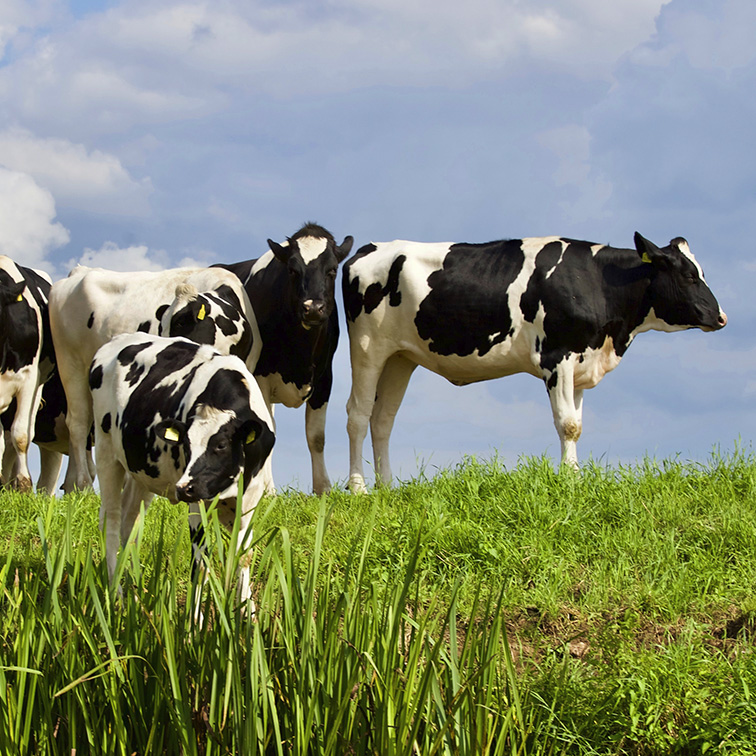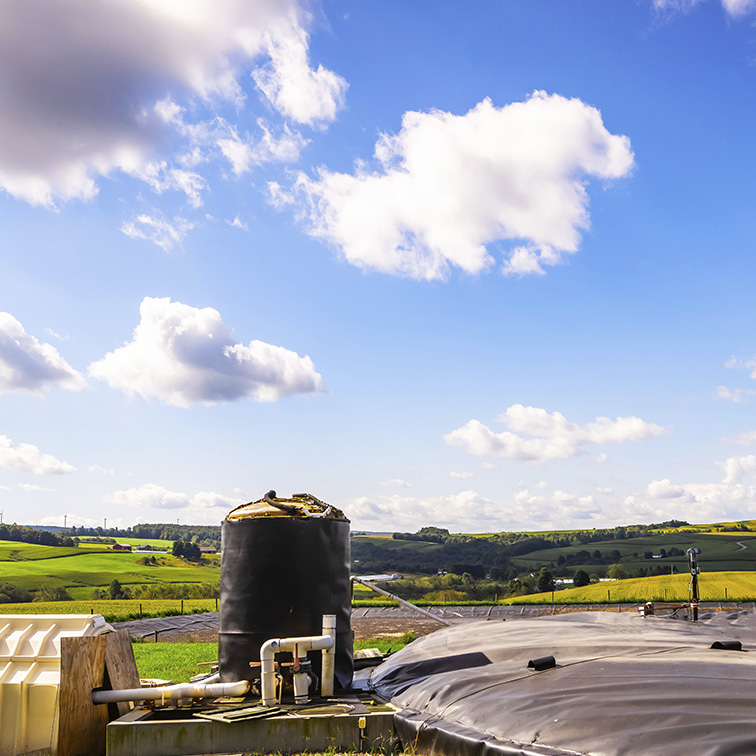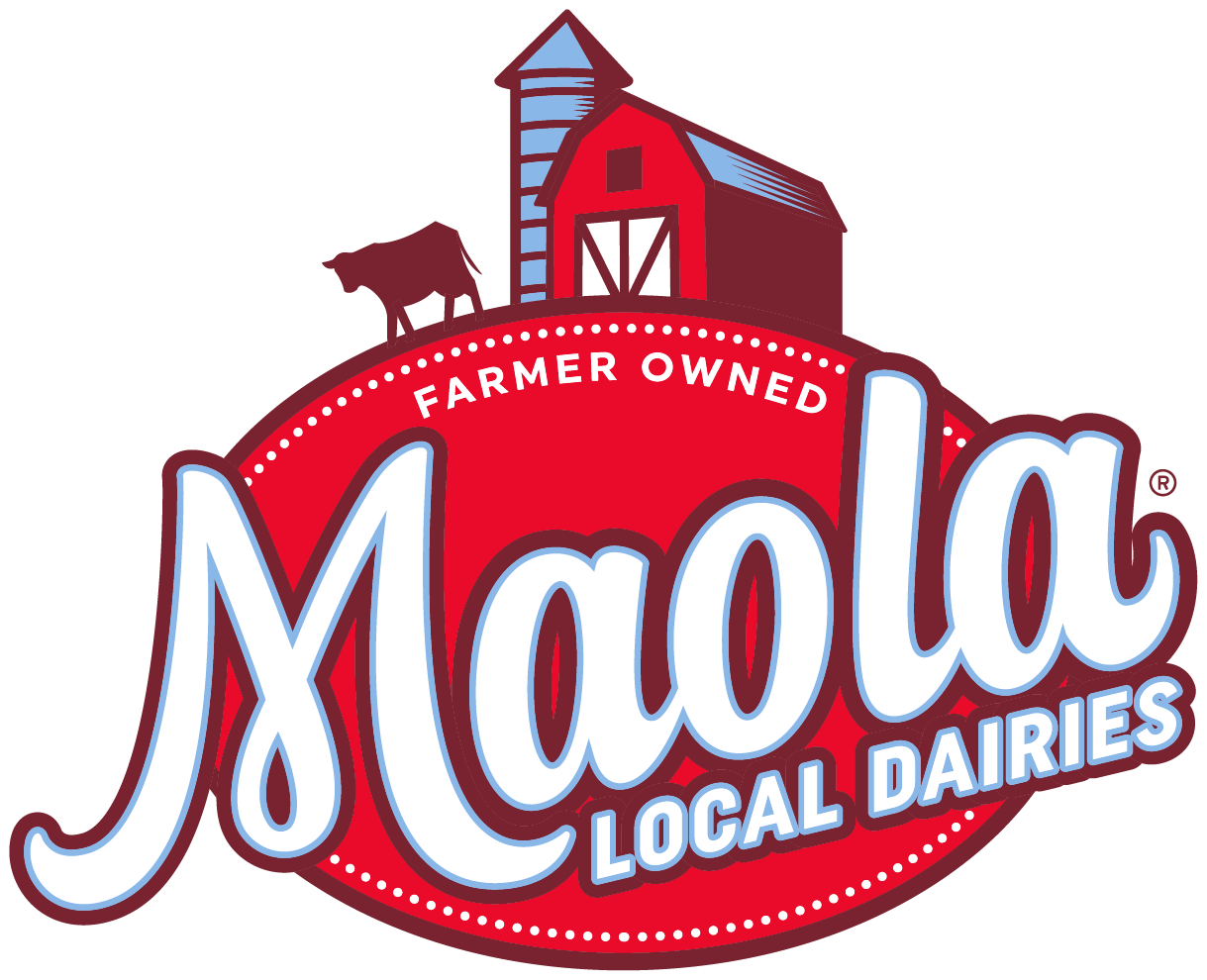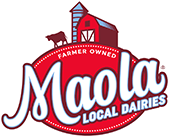Sustainability Spotlight
Unlocking a Cow’s Ability to Reduce Greenhouse Gases
Maola farmers don’t just celebrate Earth Month in April; they are constantly investing in sustainable solutions all year long! Our farmers are working towards achieving greenhouse gas neutrality by 2050. But what are greenhouse gases (GHGs) and why should we as consumers care about them?
Greenhouse gases are an essential part of regulating the earth’s temperature. Without them, our earth’s temperatures could drop as low as -0.4˚F and would be therefore unable to sustain life. So why is there an urgent need to reduce them? The goal of greenhouse gas neutrality is to have GHG net out at their input vs. output levels. An overabundance of GHGs, mostly caused by human activities, can cause the Earth to overheat at an accelerated rate making our planet too hot to live.
The four main GHGs are carbon dioxide (CO2), methane, nitrous oxide, and water vapor. Let’s take a closer look at methane, as its overabundance is mainly thought to be a byproduct of agriculture, or more specifically, cow burps and cow poop.


Reducing Greenhouse Gases, One Cowpie at a Time
You’re probably wondering how our farmers could possibly stop their cows from pooping or burping to reduce methane emissions. While the earth would smell a little sweeter, cow manure is an essential fertilizer on most farms to help grow crops, so eliminating it isn’t really an option. However, our Maola family farms have found ways to catch and reuse the methane from manure in the form of manure digesters.
Farms often have open-air manure storage, but digesters allow farmers to store manure in sealed, air-tight vessels instead. The digester, which is heated, then uses the bacteria present to maximize manure breakdown, which releases methane and then converts it to biogas. These biogases can then be used as electricity to heat buildings or fuel vehicles, thus creating renewable energy, and effectively reducing GHG emissions!
Virginian Maola family farmer, Ben, is working on implementing one such digester on his farm. He says that the number one question he gets asked about his farm is about sustainability. He knows that by using the digester they are helping their farm become more sustainable by reducing their carbon footprint.
Cleaning Up Dairy Air
Let’s look at the other form of methane cows produce, which is through enteric fermentation, or just a fancy way to say a burp! Cows are ruminants: animals that have multi-chamber stomachs that rely on bacteria to break down plant-based food; the byproduct of this process is methane. Whereas with the digesters we can capture the gases by covering the manure storage, we can’t cover a cow’s mouth to catch the methane, but we can reduce the level of methane produced by changing their diets.
Methane-reducing feed additives are one avenue that is being explored to change a cow’s diet to create less methane. Dr. Joseph W. McFadden, associate professor of dairy cattle biology in the Department of Animal Science at Cornell University, says that feeding cows bromoform, the active ingredient in seaweed, could be a potential solution. However, this is purely in the exploratory phases in the U.S. and still requires further investigation.
This may seem like a daunting process and full of roadblocks, but it’s important to follow all the steps to ensure that the glass of milk on your table is fresh and of the highest quality that you always expect. So, take time this Earth Month to look at ways where you could live more sustainably to help reduce climate change, just like our Maola Farmers have!

